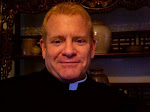Charity in Diversity
Fr. Tony’s Midweek
Message
July 12, 2017
In my office there is
a picture of the Daqin Pagoda from near Xi’an China. Though the subject of some academic
controversy, this building may not be an ordinary Pagoda, however. Some have identified it as the tower of a
monastery library built in
A.D. 640 by Church of the East Christians during Tang dynasty
China’s great period of openness and welcoming of foreign religions and
business people.
The Church of the East
for several centuries was the biggest branch of Christianity, both in terms of
numbers and geographic coverage, from Eastern Turkey through the central Asian
area, to China. Because Islam later took over much of this
area, the Church of the East has been greatly reduced, and yet still barely
exists in some areas of Syria and Iraq. It is
called “Nestorian” by Roman Catholics and Eastern Orthodox who claim that it is
a heretical sect that split from the body of the Church after the Council of
Chalcedon (A.D. 451) defined the two natures of Christ, human and divine, and
approved of the use “Mother of God” to describe the Blessed Virgin Mary. Nestorius was a Metropolitan Patriarch in
Constantinople who urged the use of the term “Mother of Christ” and was deposed
after Chalcedon. After Chalcedon, many who agreed with him fled
persecution from the Roman Empire and travelled East.
Scholars now believe
that much of the conflict between Nestorius and the Chalcedonian fathers was the
result of cultural misunderstandings between those whose native language was
Greek and those whose native language was Syriac (a late form of the Semitic
language of Jesus, Aramaic). Much of the “heresy” attributed to
Nestorius is now seen to be unfair exaggerations and caricaturing of his
positions by his opponents.
Such unfair and
triumphalist misrepresentation of an opponent’s position is a common scene in
situations where Christians accuse each other of “heresy.” Another example is found in Augustine of
Hippo’s vilification of the British monk who dared to question his extreme
version of the doctrine of original sin: Pelagius. It is now clear that many of the words
put onto Pelagius’ lips to get him excommunicated and declared a heretic are
Augustine’s distortions and not anything that Pelagius actually taught.
It is important that
we try to understand our faith in line with the teaching of the apostles and
their successors, the early bishops. I
accept Chalcedon and the gentle recognition of human dependence upon God that
the bishops saw as key in censuring Pelagius. But I also recognize that the
Church of the East was a major historical part of Christianity, and reject
Augustine’s extreme doctrine of depravity conveyed to all humanity through the
sexual act of generating new babies.
It is also important
to try to avoid the trap that the early bishops fell into early on: insisting on
only one way of understanding and hurling anathemas and labels of “heretic” on
any who disagree with us. “Love one another” said Jesus, and “bear
with each other’s weakness.”
Grace and
peace.
~Fr.
Tony+













No comments:
Post a Comment